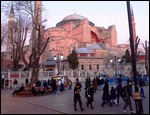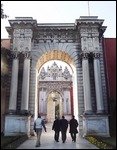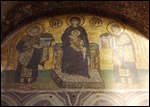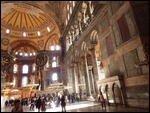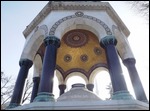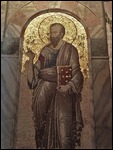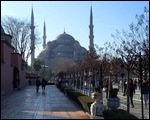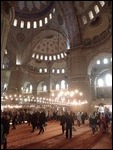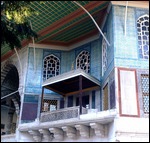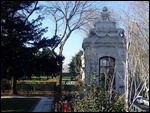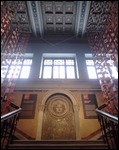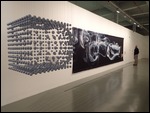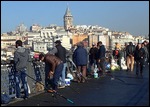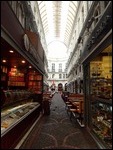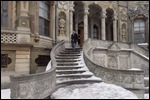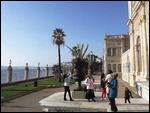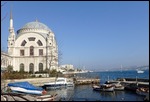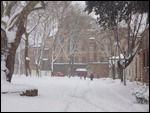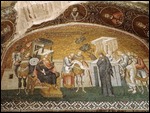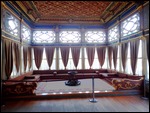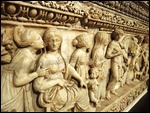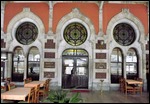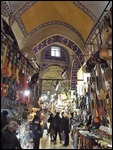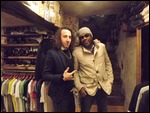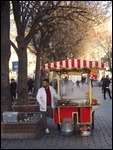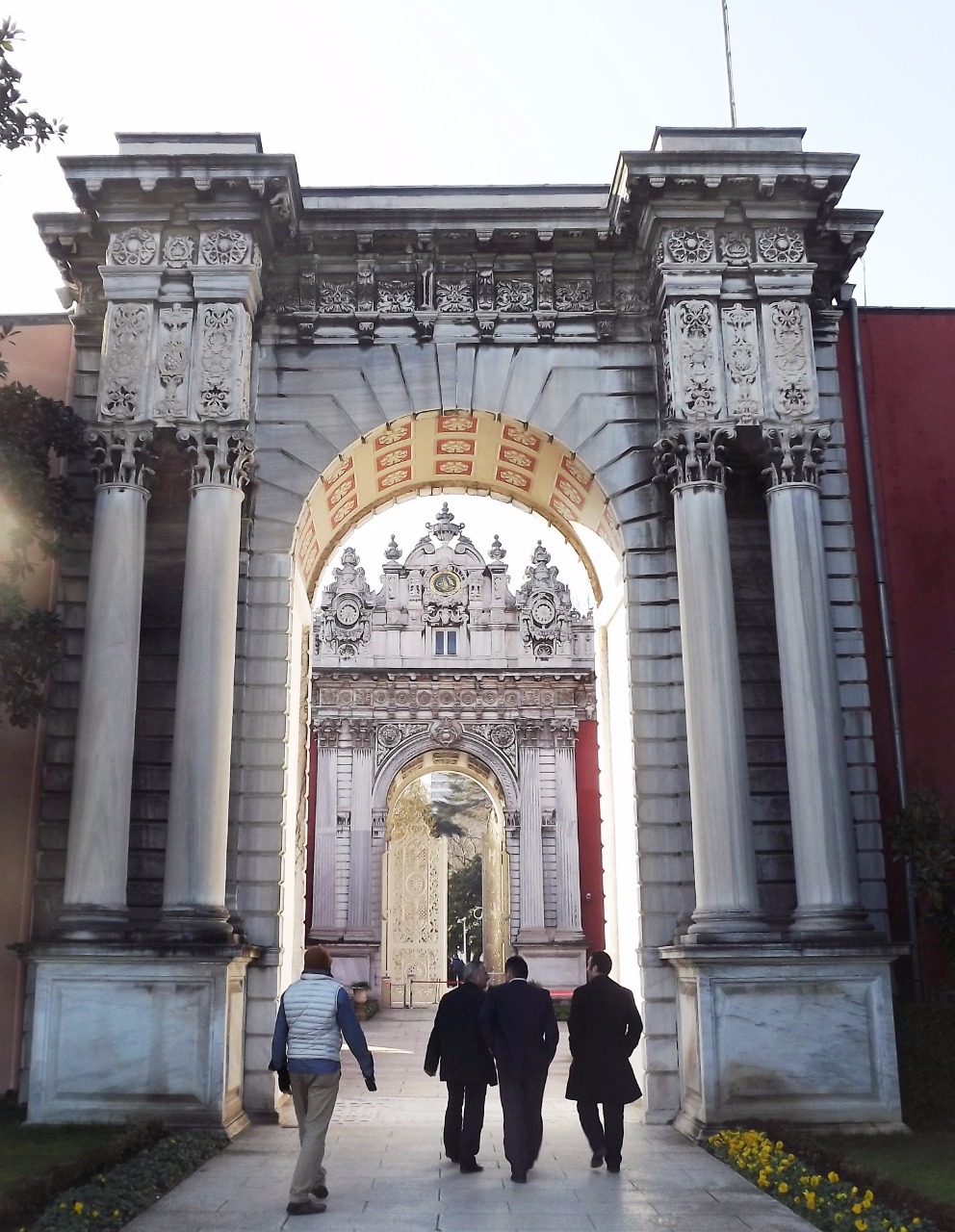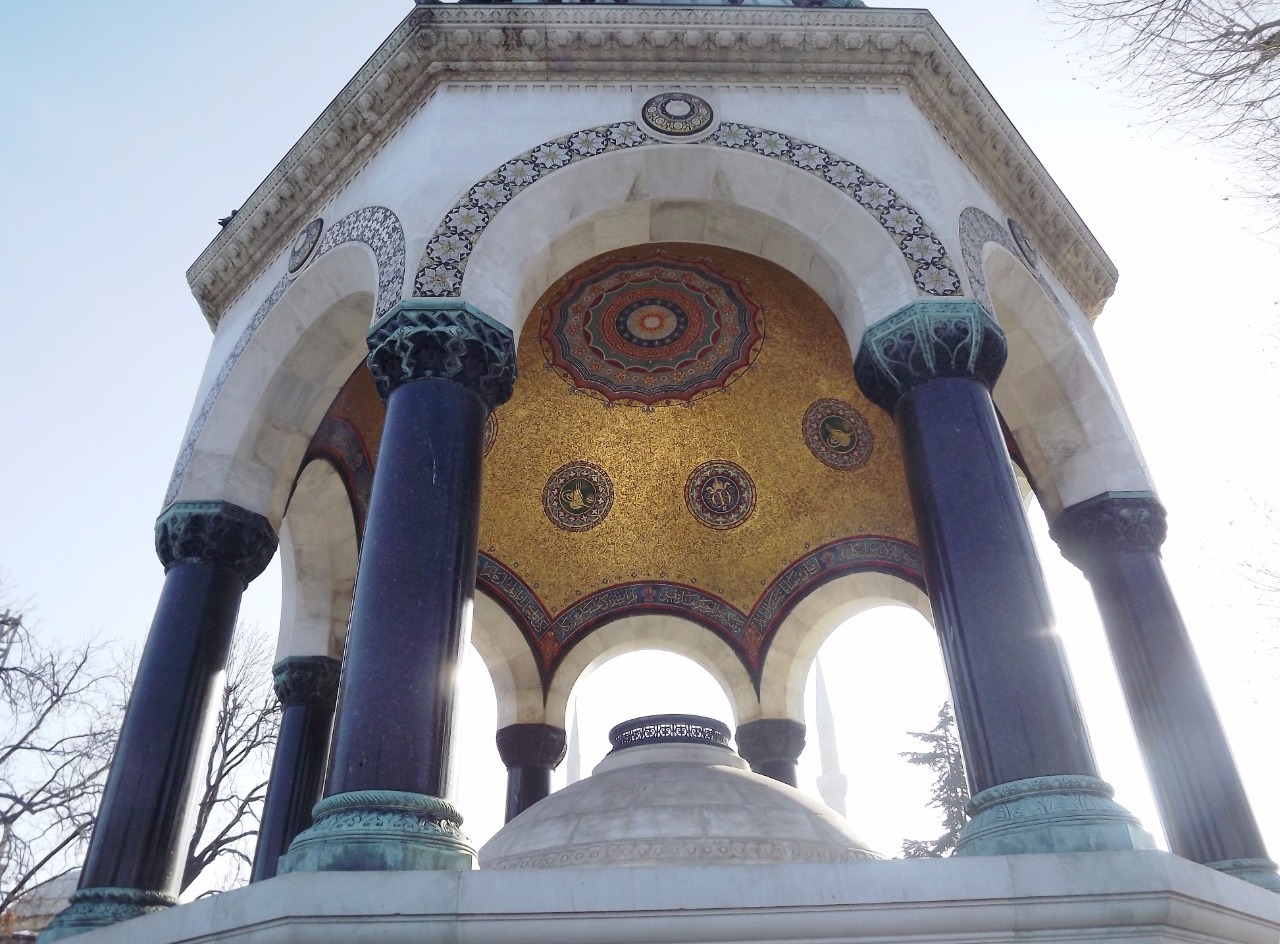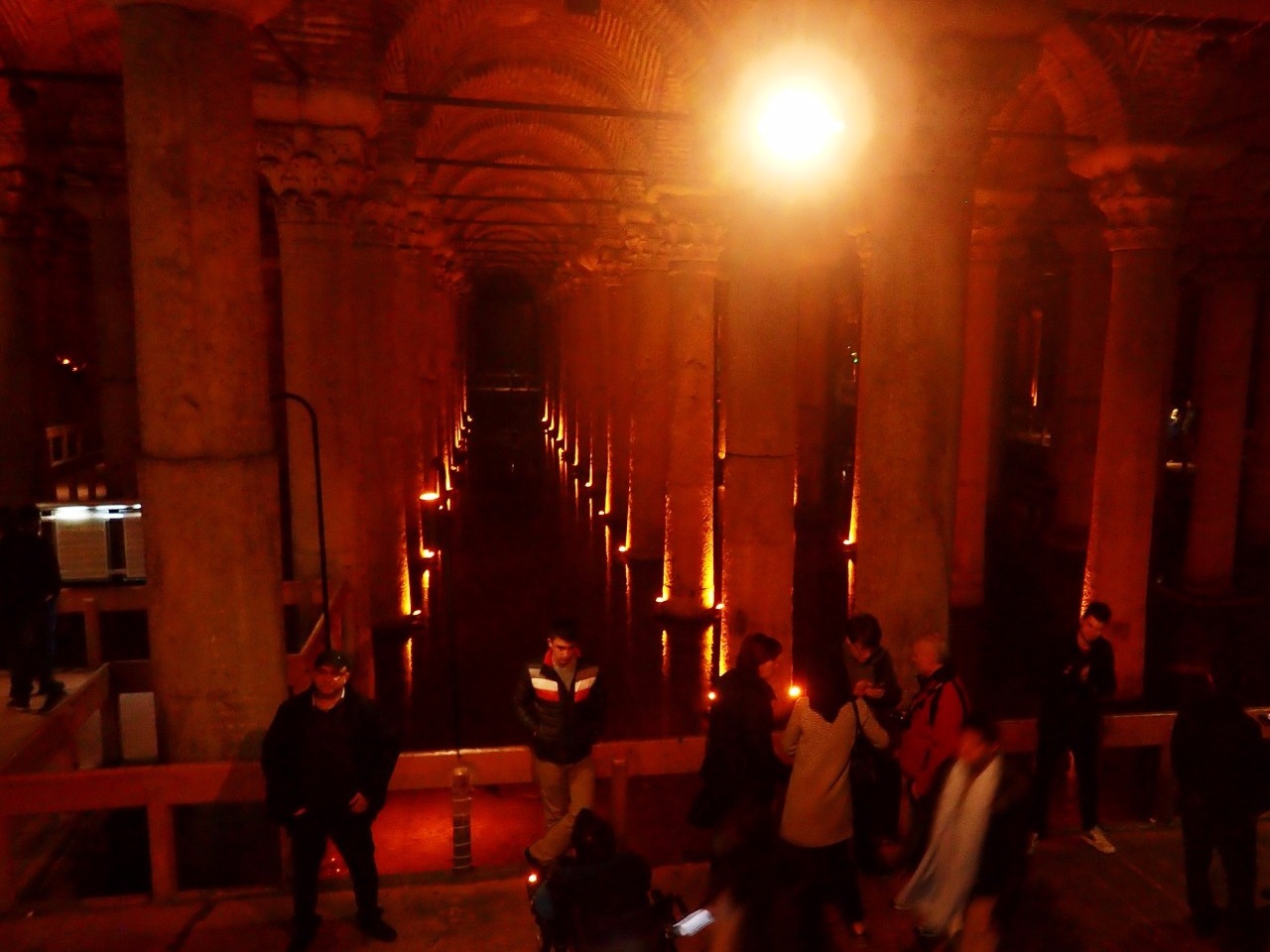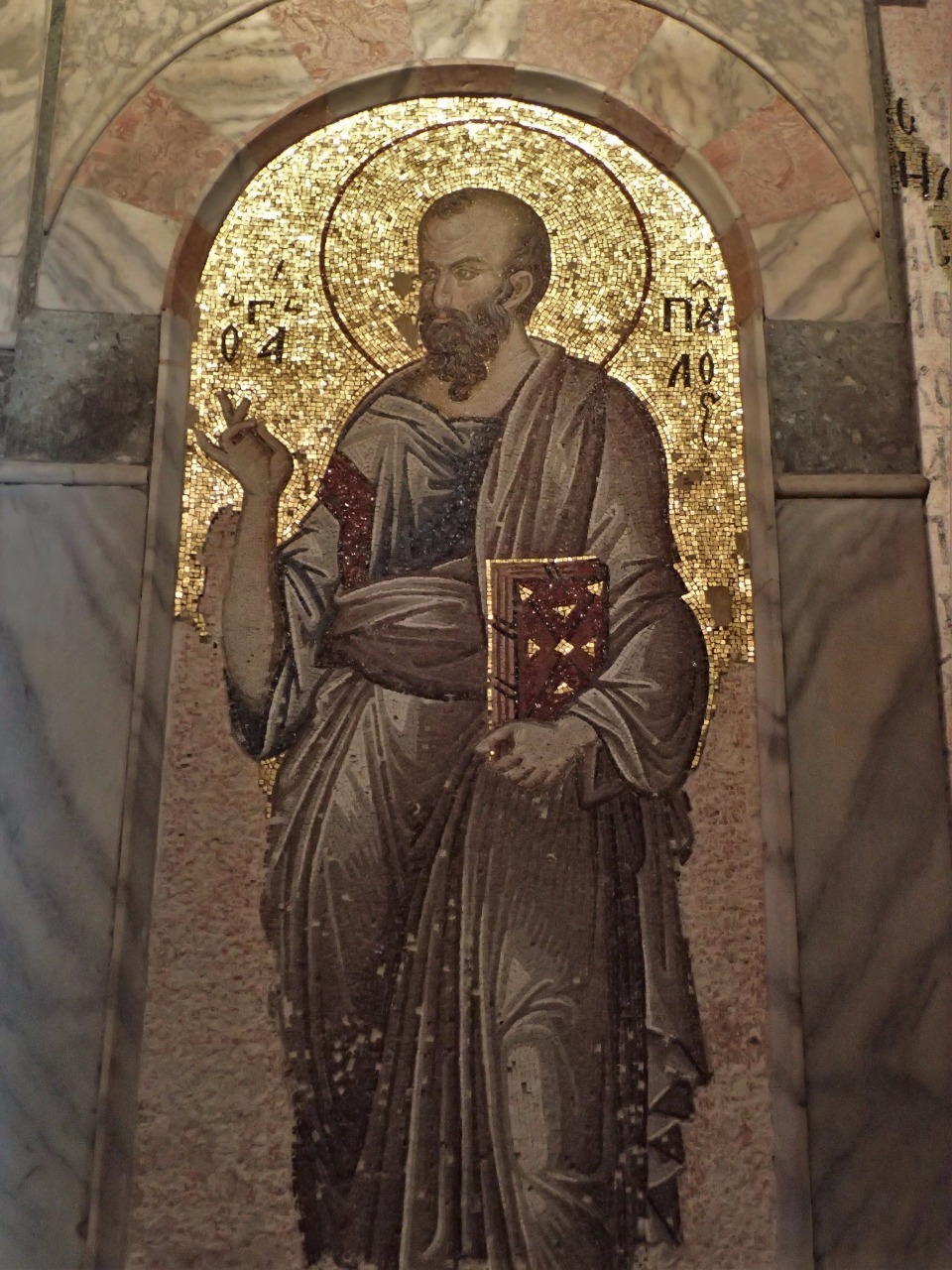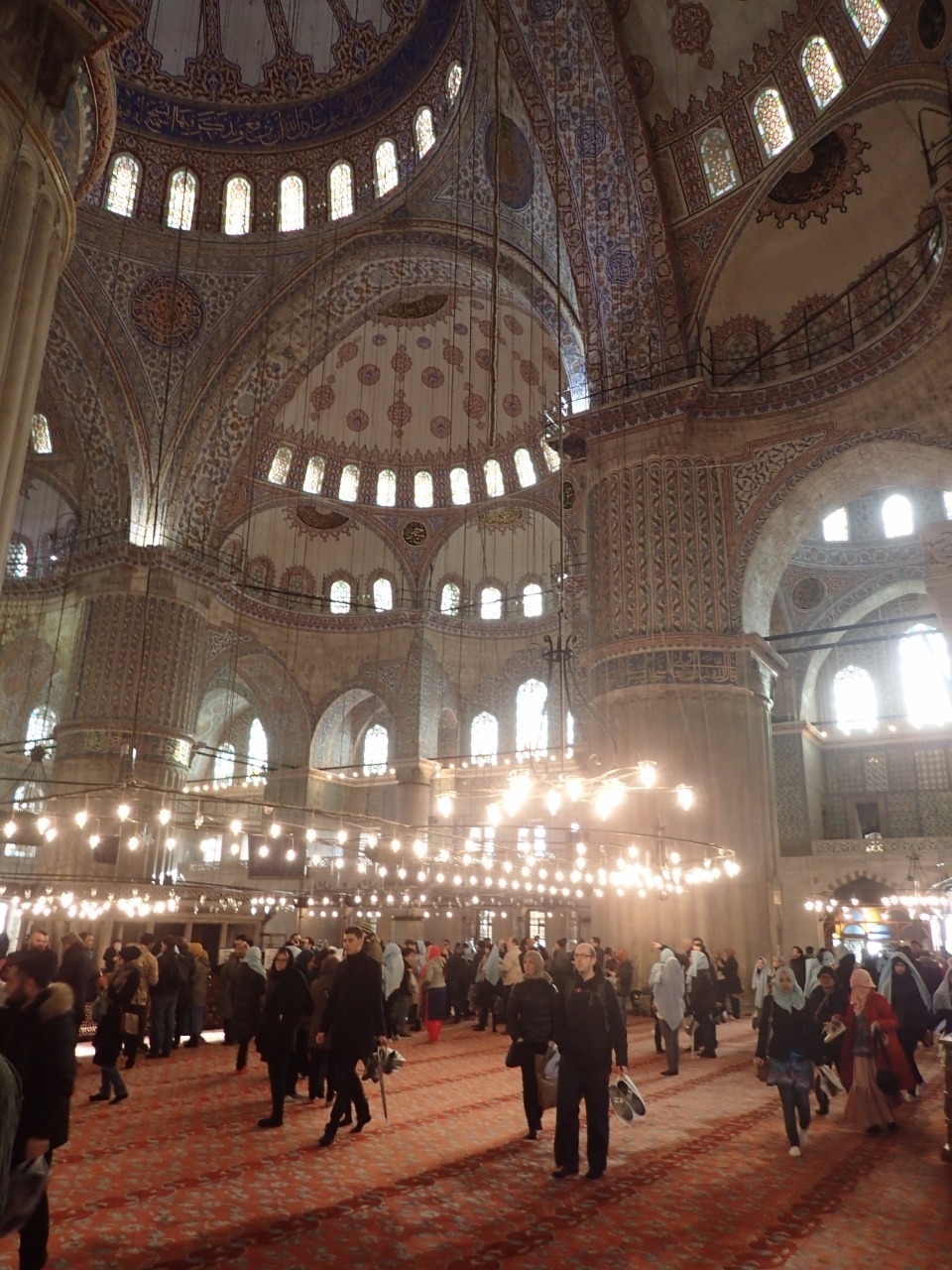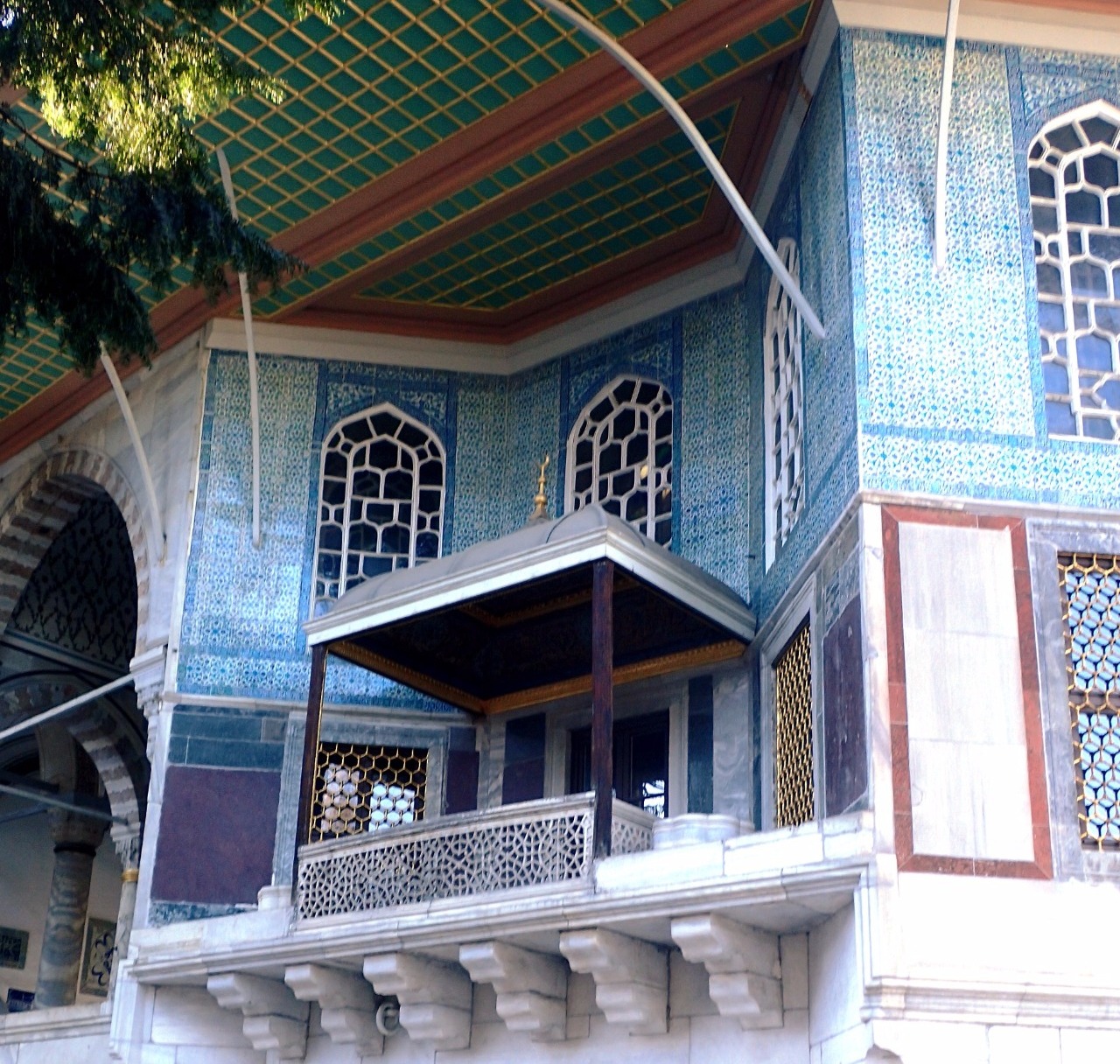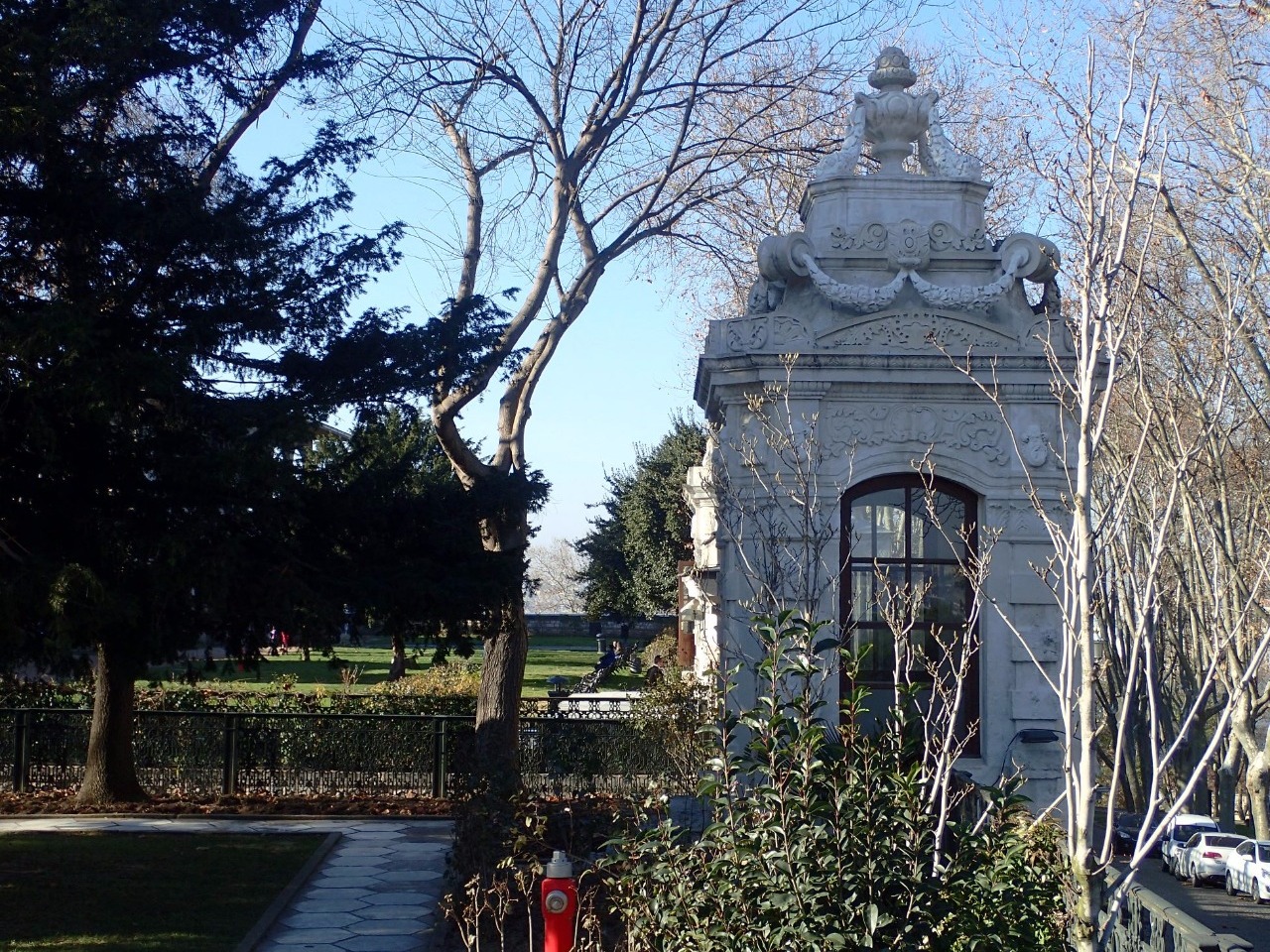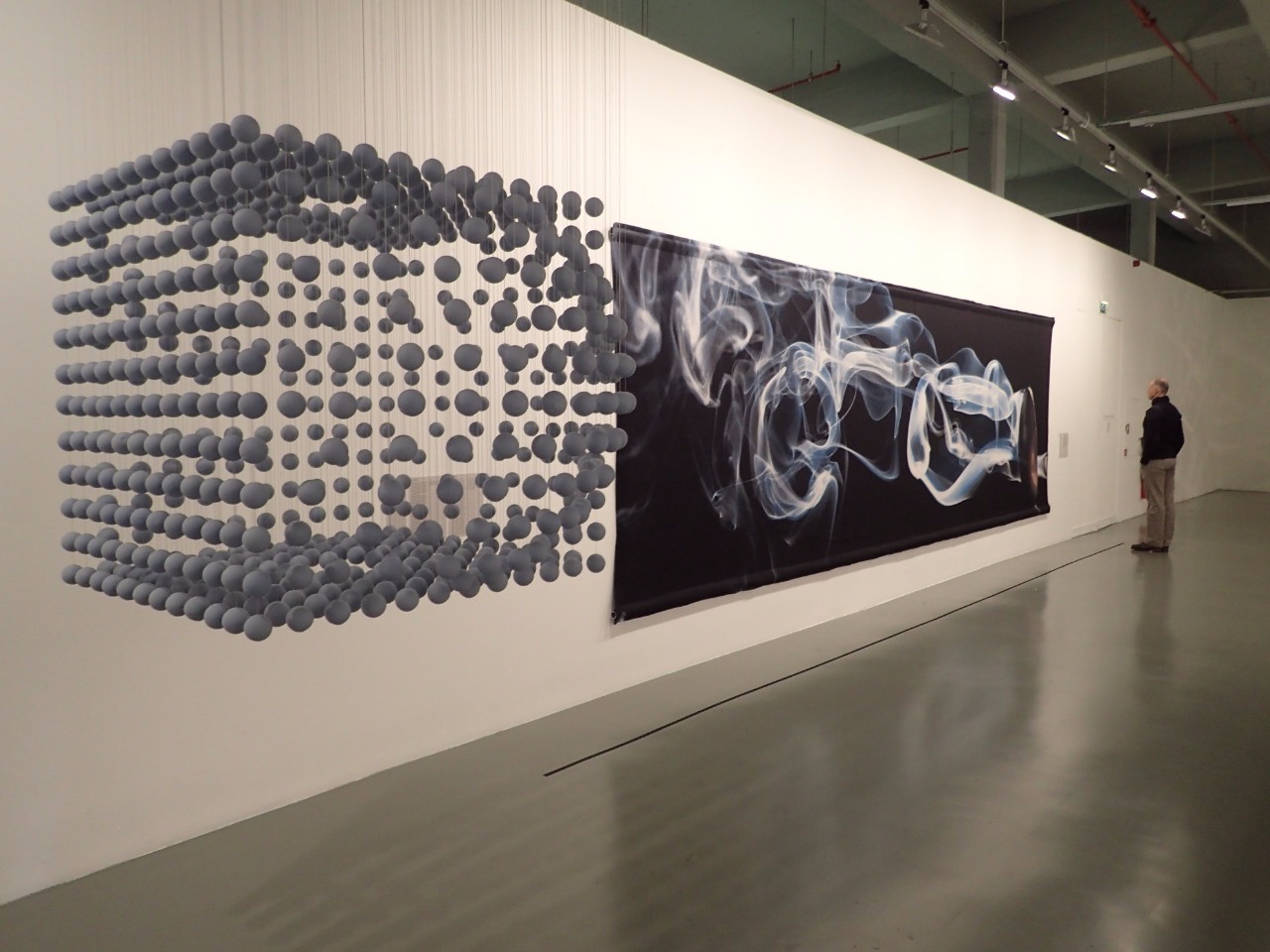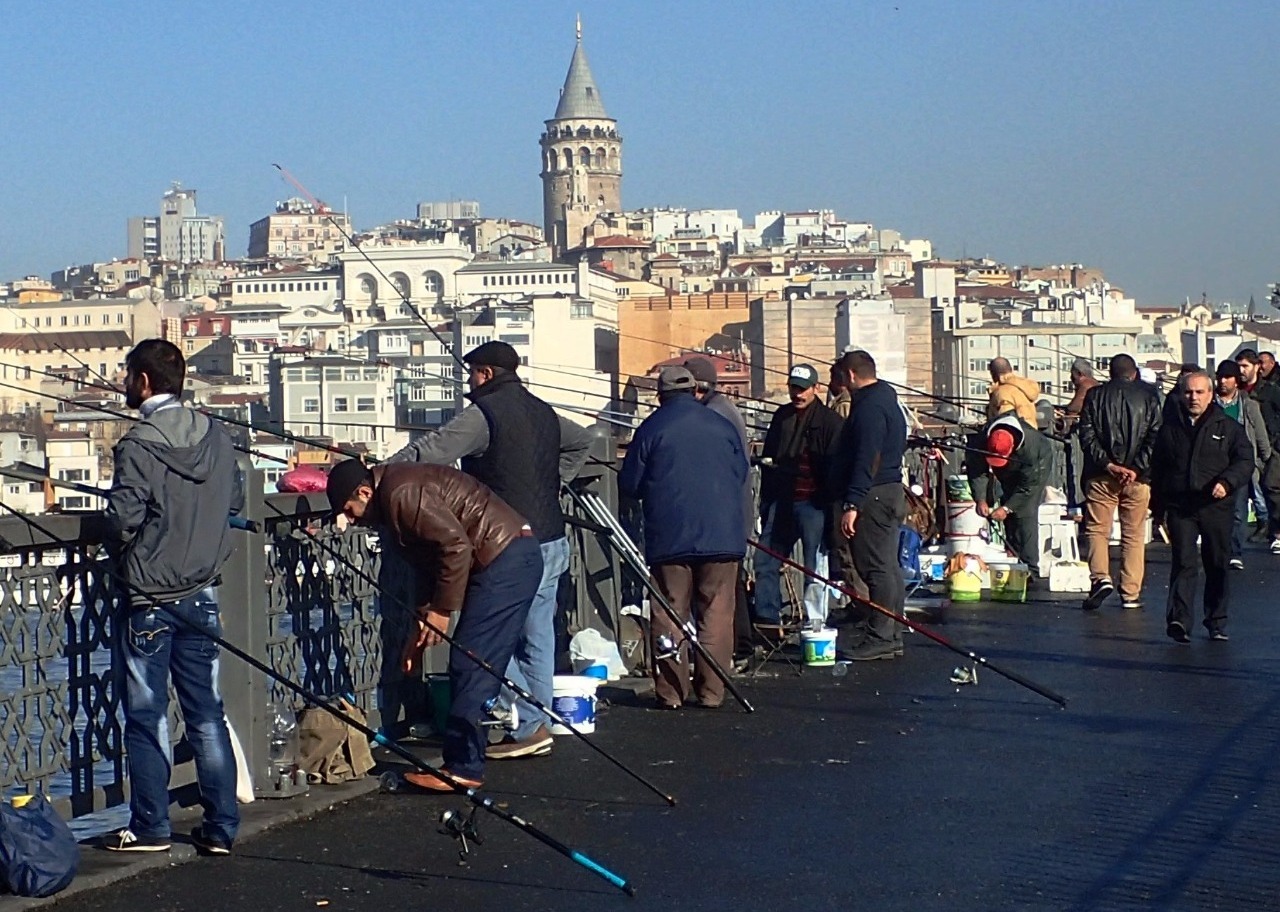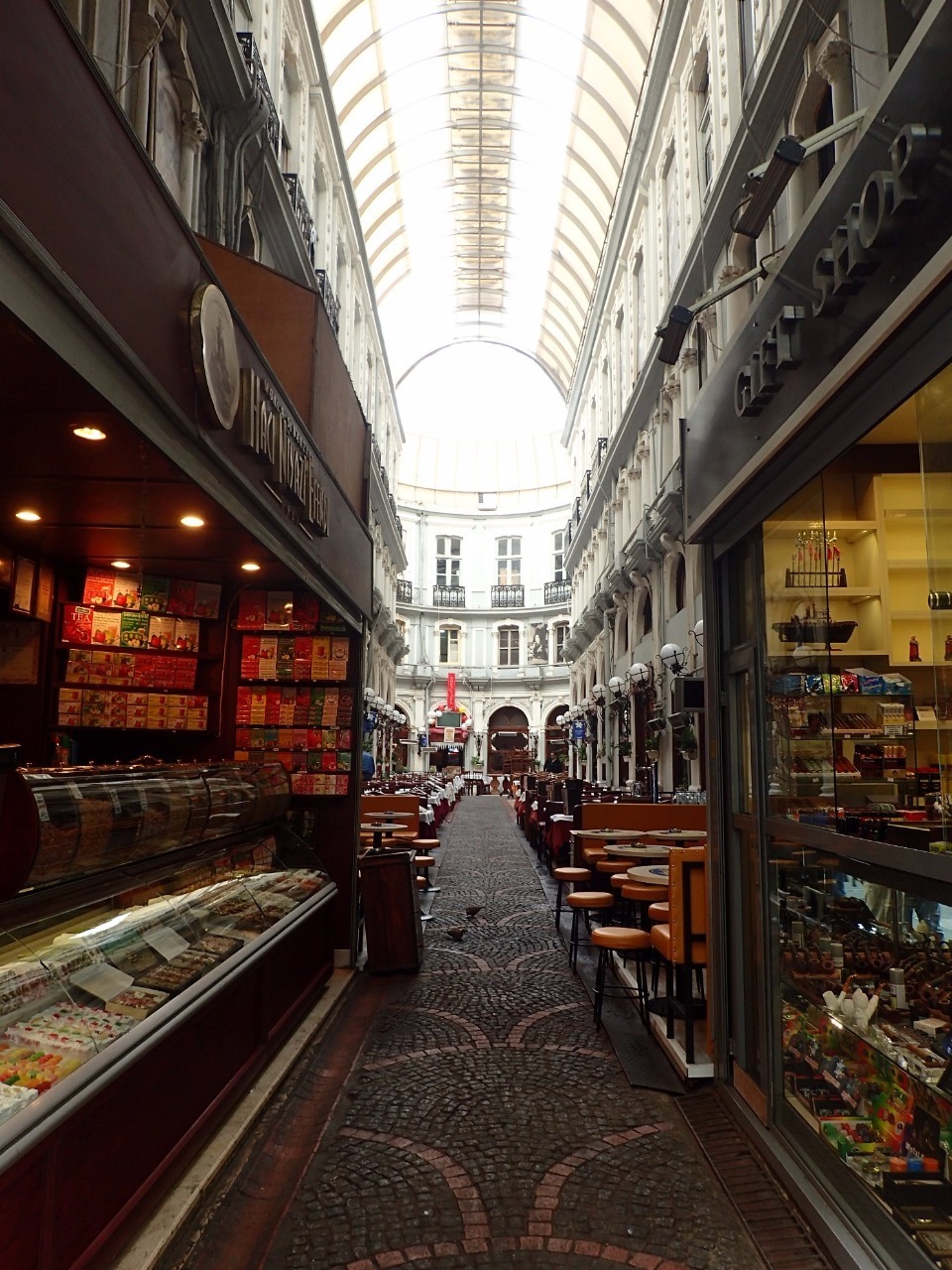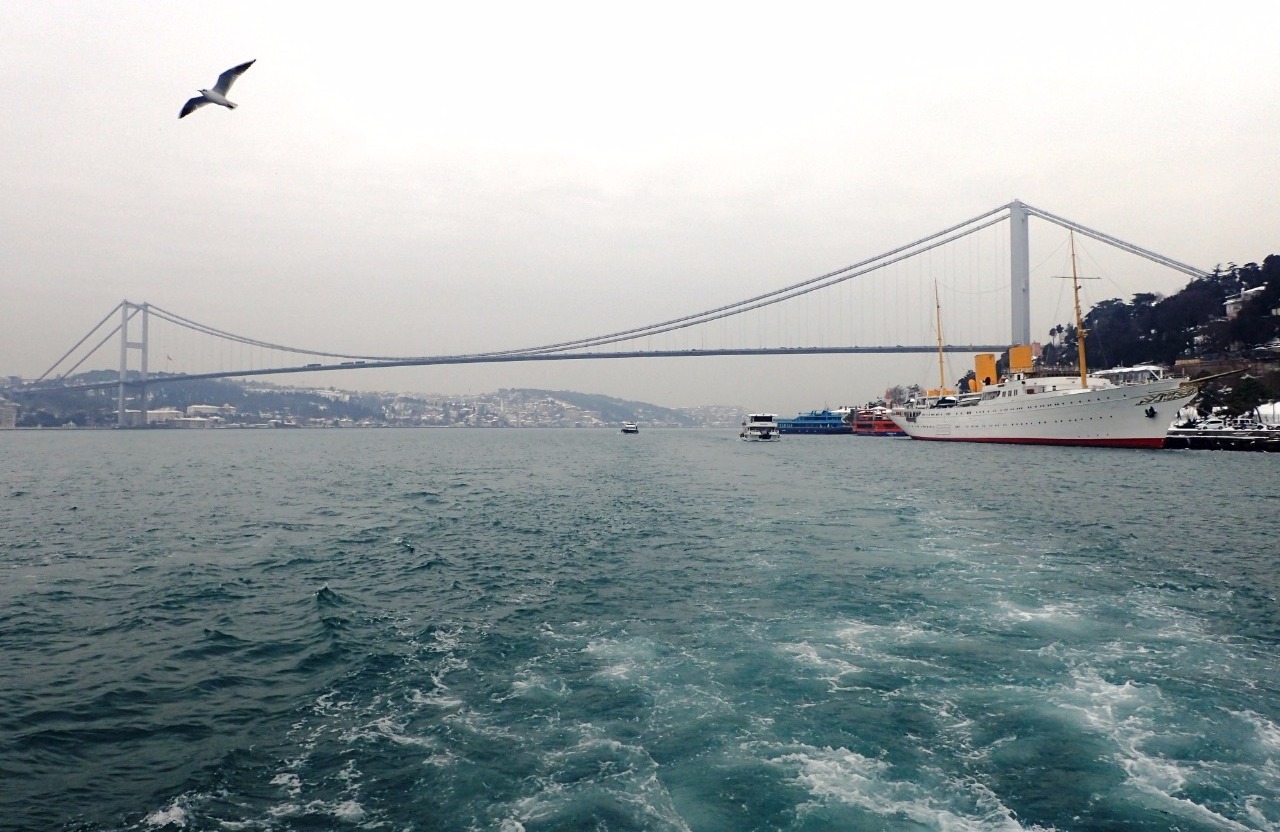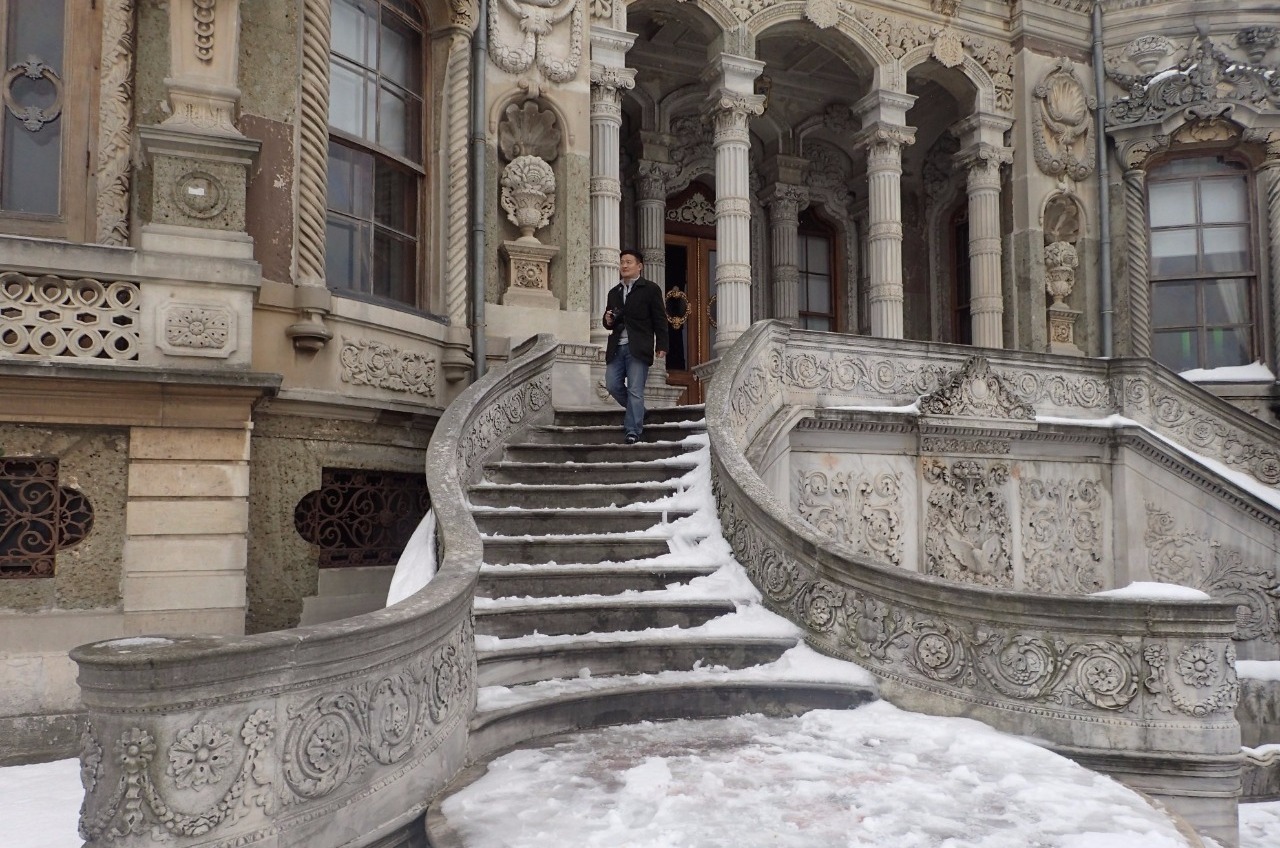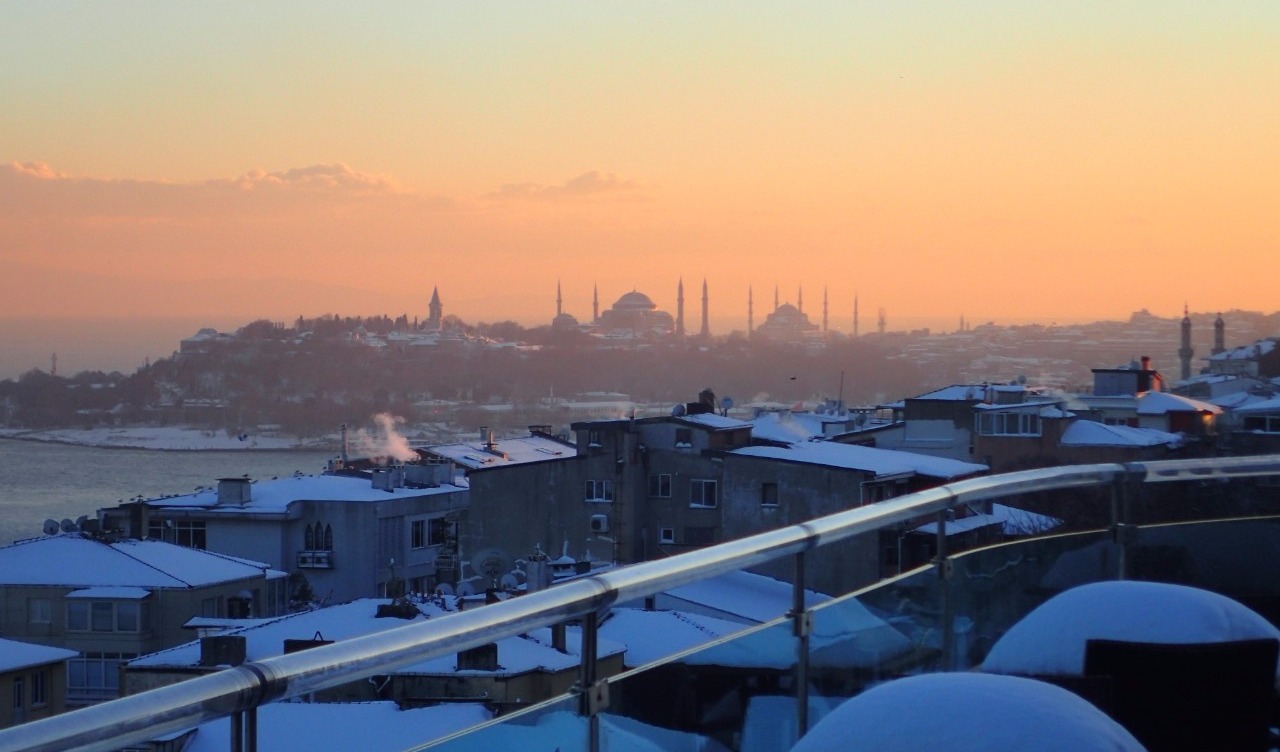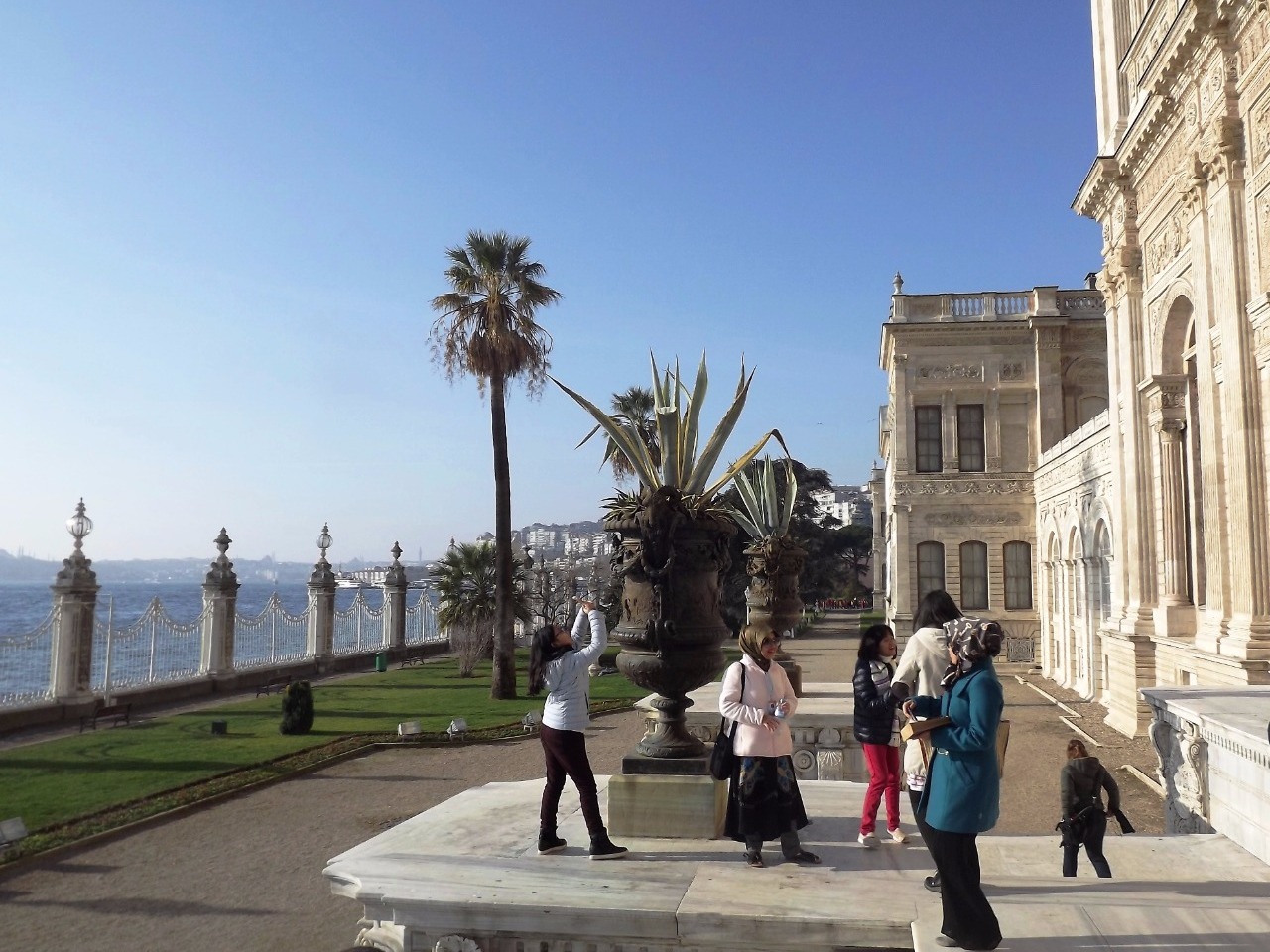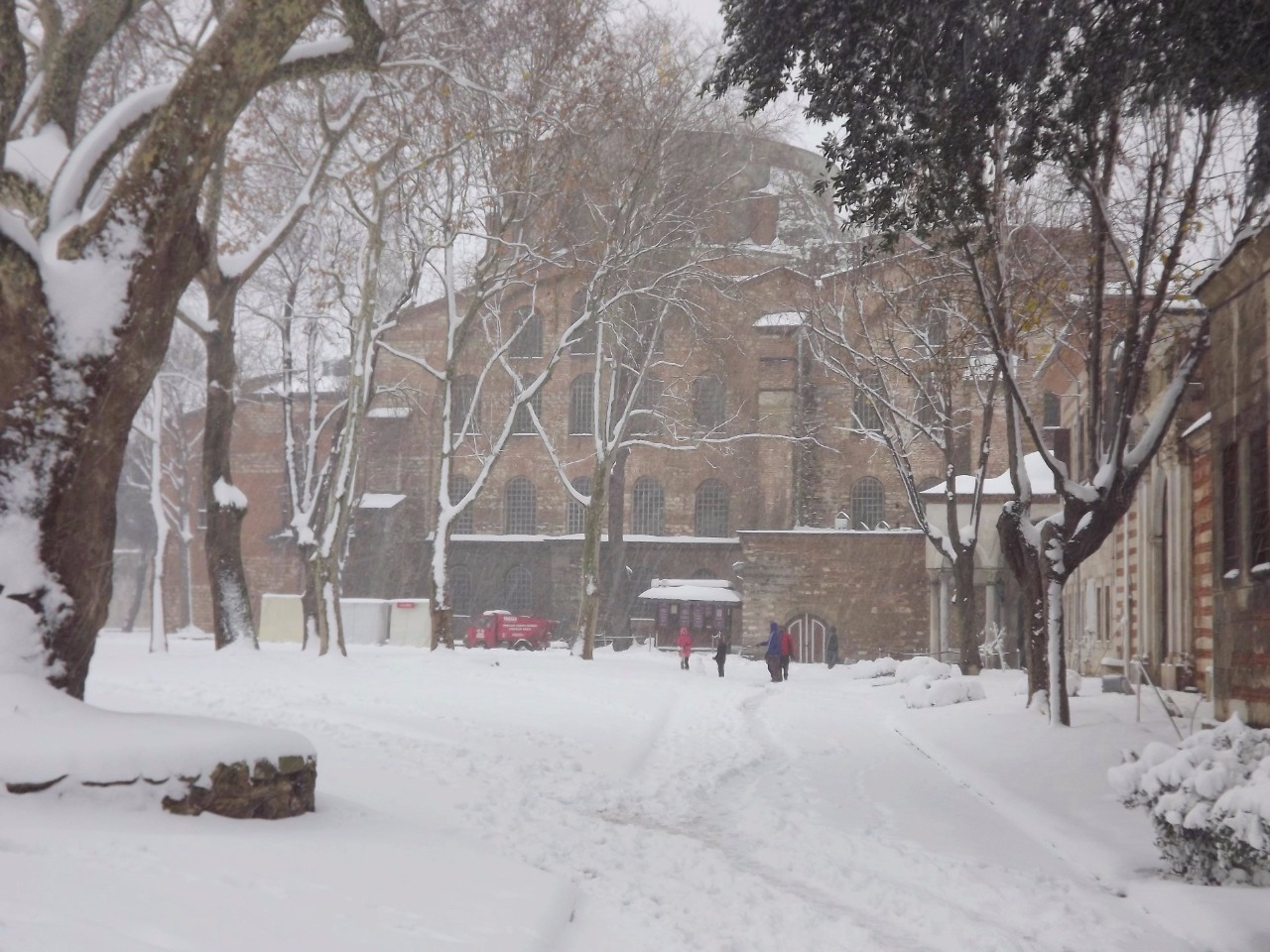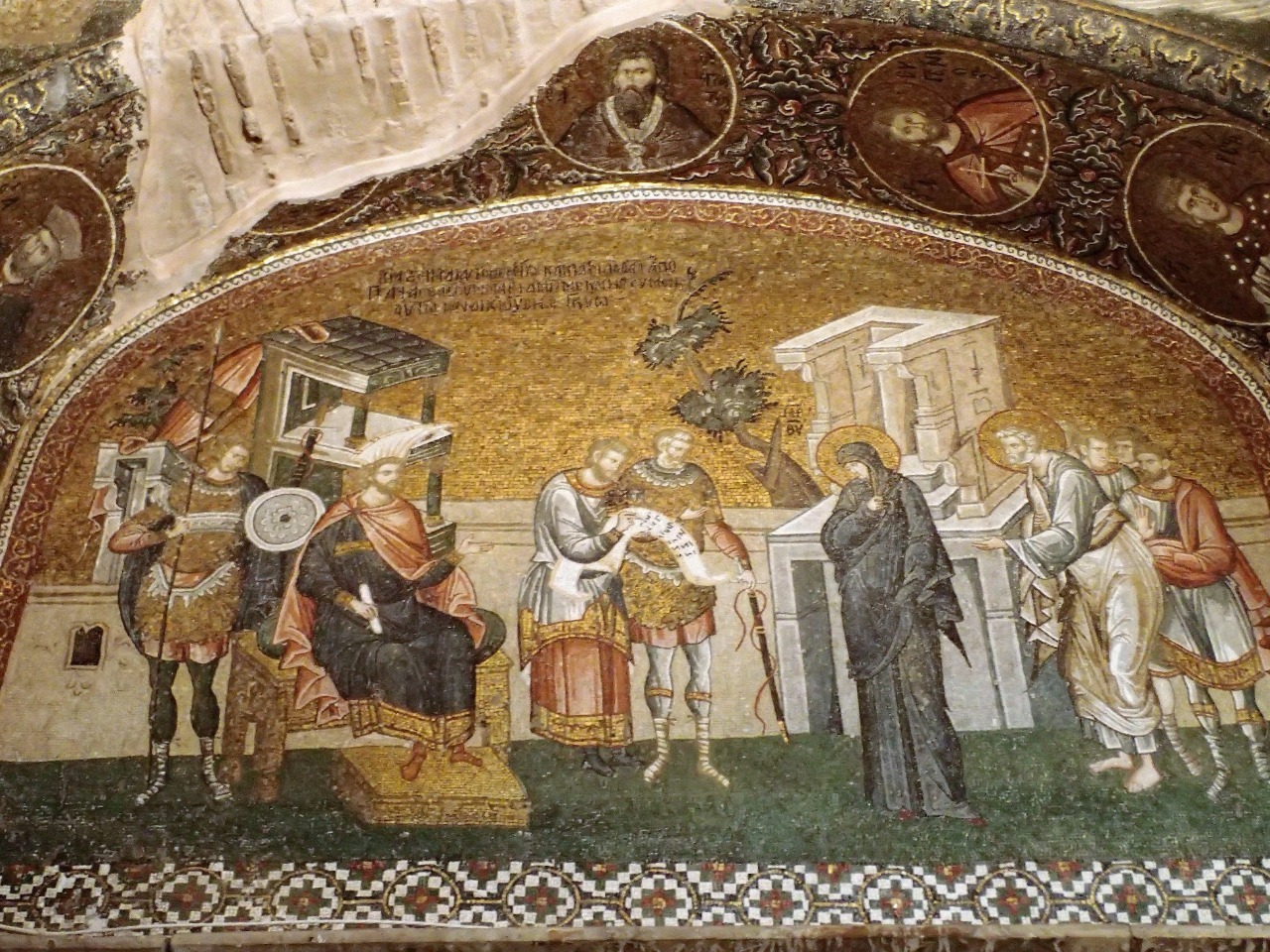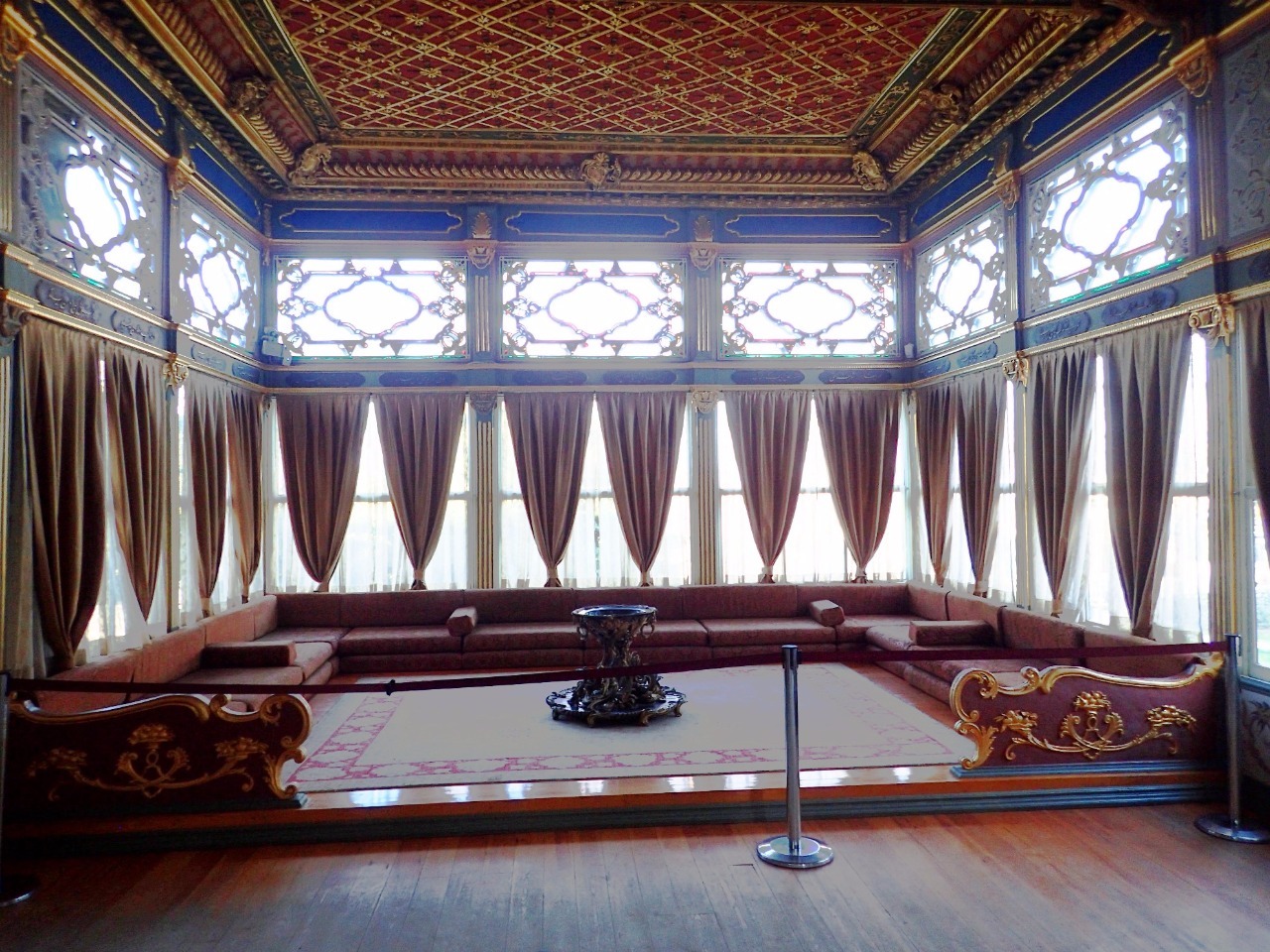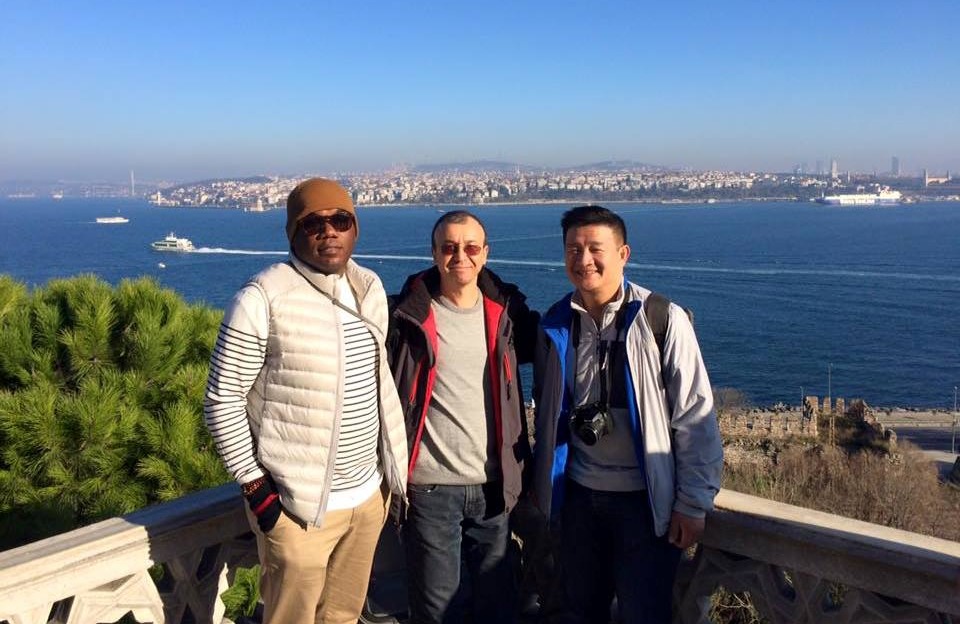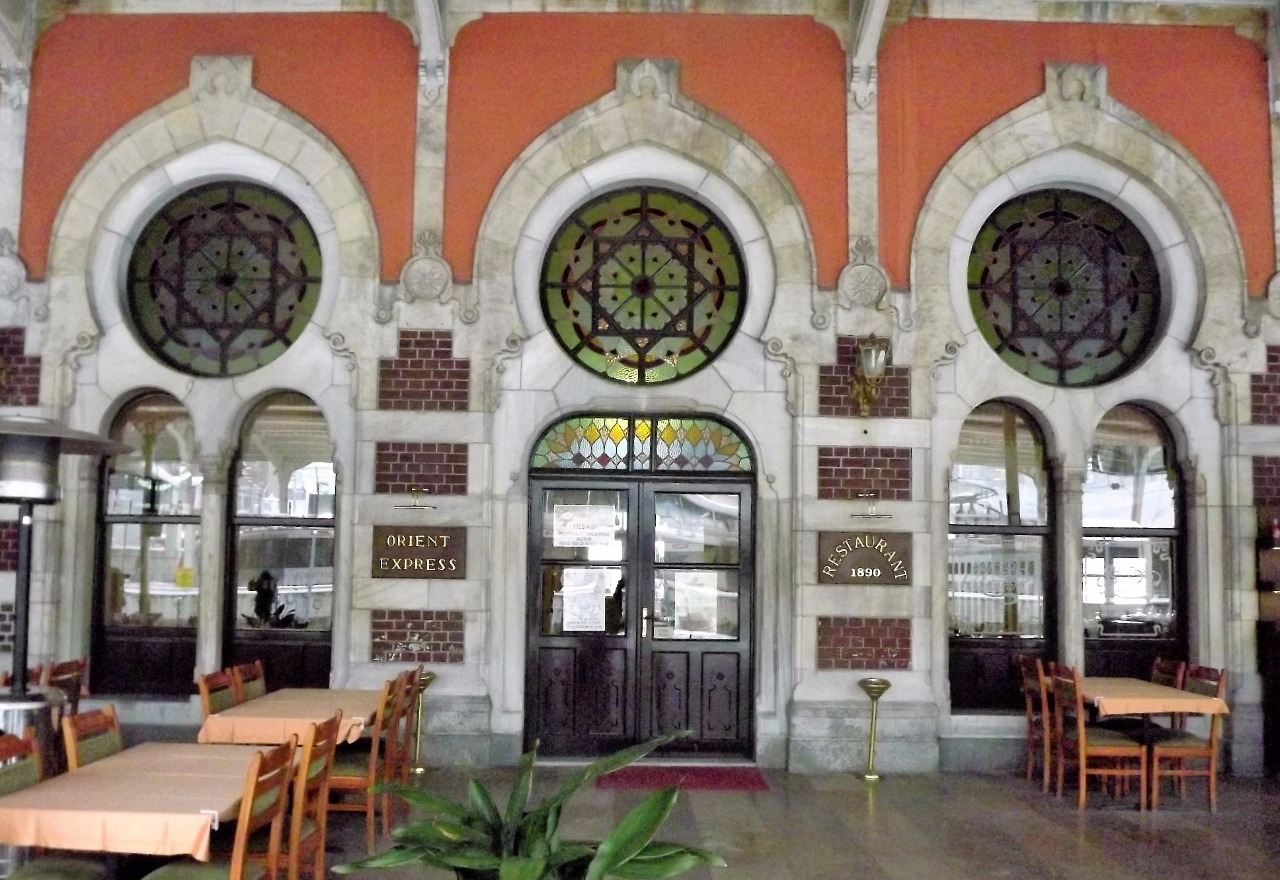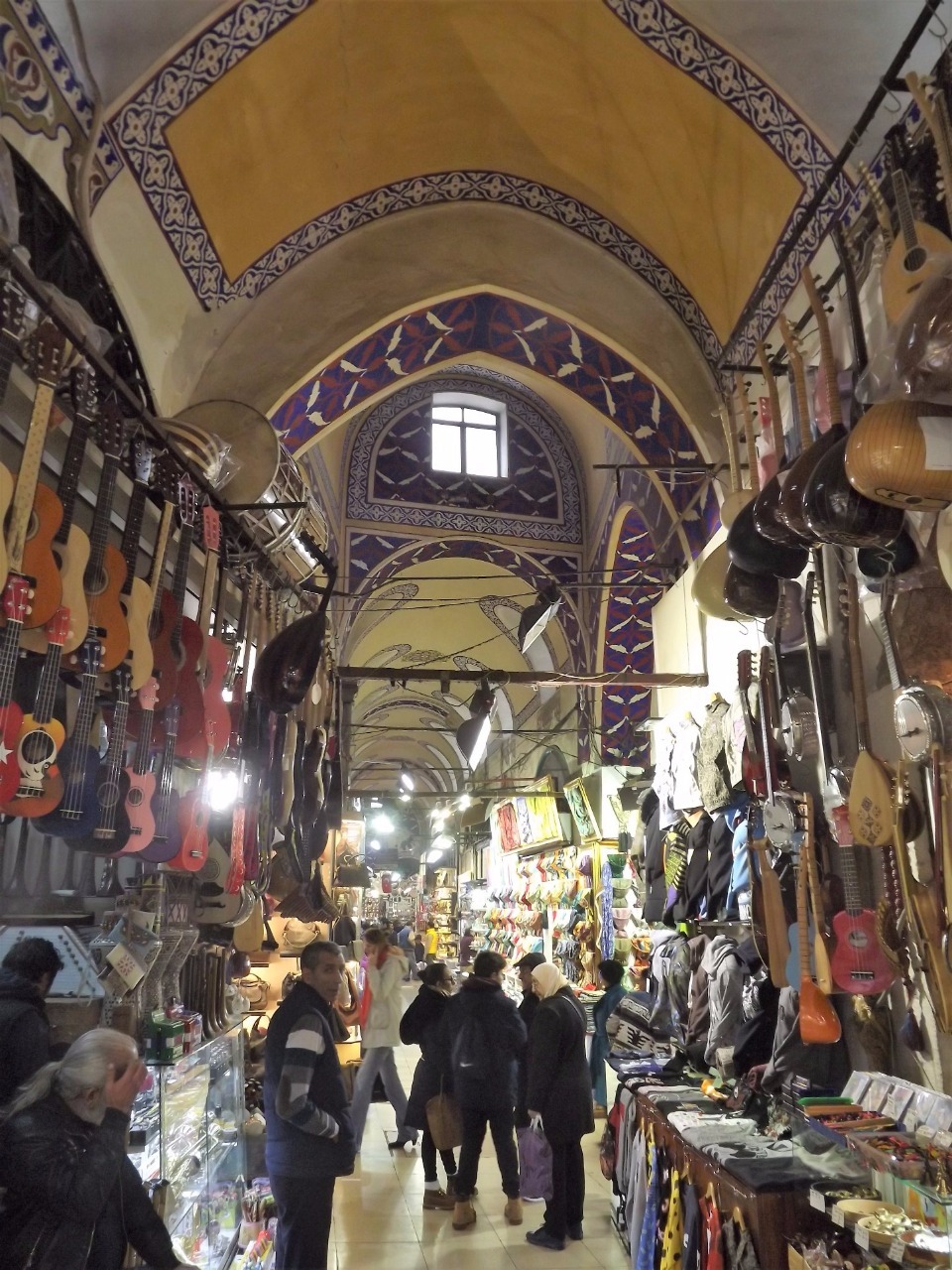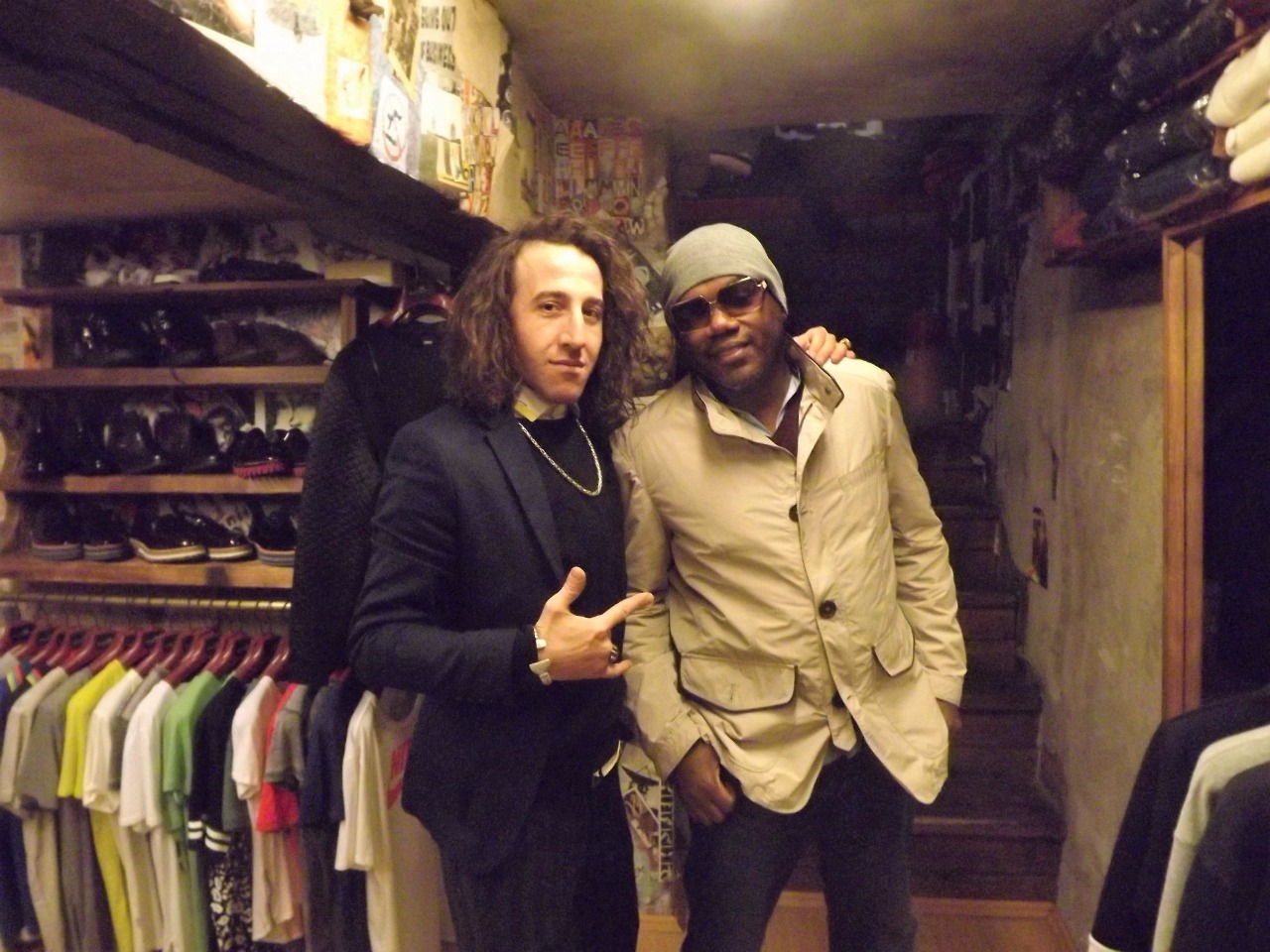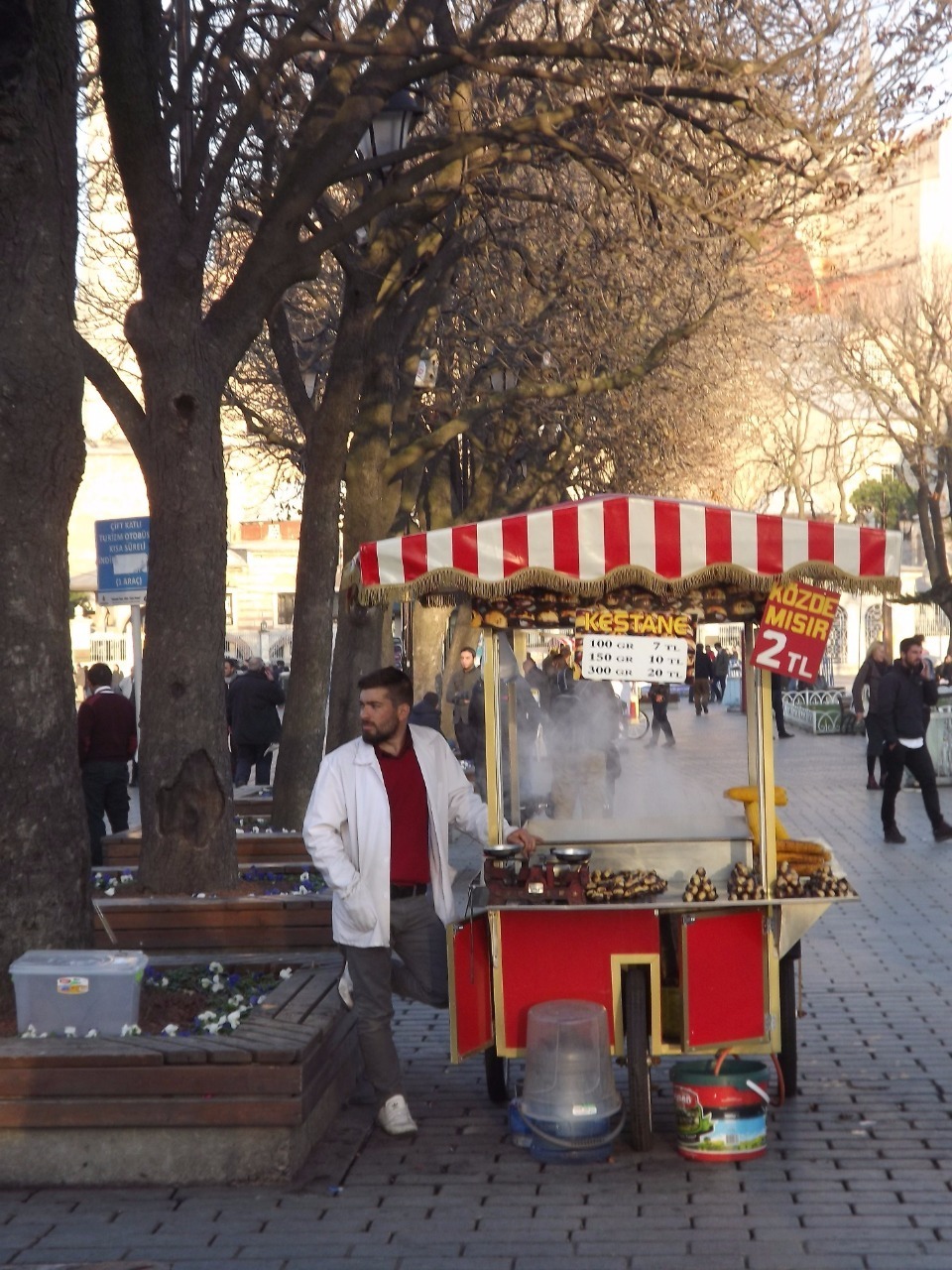To see the rest of our photos, visit my Flickr albums here and here.
Istanbul, Byzantium, Constantinople - The city bearing all three names is history's longest-lasting powerful city. Rome, Babylon, Alexandria, Thebes, Athens, Baghdad, Chang'an, Delhi, and Beijing each had a few centuries of glory days, but Byzantium-Constantinople was a world-dominating capital from 330 AD to 1700, spanning a period of 14 centuries.
After Neil and I landed in Istanbul after a long flight, the first Turk we talked to was a car shuttle agent at the airport who arranged for our ride to the hotel. He grew up in the southeastern Kurdish city Diyarbakir, but moved away from the unstable politics and proximity to the Syrian border to seek a better life here. A well spoken young man, he commented that in southeastern Turkey many people had machine guns, which was more dangerous than America where people can legally own firearms. After a short wait our shuttle van appeared. The driver was a burly young man who played American R&B music while driving us to the city. When he heard me mention Ataturk Airport, he made a point to ask whether we knew who Ataturk was, then proudly explained that Ataturk was the first President (of Turkey).
A. Dolmabahce Palace
Dolmabahce Palace was just down the hill from our hotel in the New City, so we made this our first destination in Istanbul. This is an extravagant Ottoman palace built in the Baroque style, heavily decorated with plant and geometric motifs since Islamic tradition forbids human or animal images. Sultan Abdulmecid I built the palace to compete with France's Versailles, by covering every surface with gold gilding, hanging multi-ton crystal chandeliers, and generous use of the most expensive furnishings. According to the beautiful young lady who guided our walking tour, the palace was built at a cost of 35 tons of gold - worth about 1 billion dollars today. Another curiosity is how different wings of the palace were designed in different European baroque styles - the outer receiving areas were done in imposing English style, but the inner living areas were done in grandiose but more curvaceous French style.
A museum of European clocks in the palace backyard also showcased work of Ottoman clock makers in the 19th century. According to the descriptions, some Ottoman clock makers only made one clock in their lifetime due to the lack of supporting industries; these were furthermore special clocks that mechanized Islamic calendar as well as the Western calendar.
An adjacent wing of the palace was recently opened as the Painting Museum, housing a sizable collection of beautiful Ottoman, Russian, and British orientalist paintings. There were also very respectable works by crown prince Abdulmecit Efendi - the last titular Caliph of the Islamic World who never became sultan. While appreciating the great art we may have come too close to some thin wires connecting to the alarm system. When the alarm sounded, the only security guard in the museum - a muscular, serious man - came over and delivered an ultimatum about not tripping alarms again. We heeded his request, but a short while later while we took Turkish coffee at the museum cafe, alarm sounded several times due to a larger group of visitors coming to the galleries. We thought the new alarm system was probably too sensitive.
After Dolmabahce Palace we made our way to the Old City to see Hagia Sophia. On the way we visited Valide Sultan Mosque - a baroque style mosque on the waterfront commissioned by the sultan's mother. The midday call to prayer was broadcast from loudspeakers at the time, but we saw just a handful of worshippers praying in the mosque.
When we walked to the T1 tram we fell victim to a shoe-shining scam, when a robust shoe-shine guy dropped his brush just as we passed by. We tried to help him pick it up, but then he and his partner insisted on shining our shoes and charging an exorbitant price when they were done. We learned our lesson: the next time someone dropped a brush we just kept walking. The T1 tram was modern and efficient. Although the tram stop occupied a narrow space on the street median, it was well staffed and equipped with turnstiles to work like a standard subway station.
B. Hagia Sophia (Church of Holy Wisdom)
I saw Hagia Sophia over 11 years ago, and have wanted to see it again since. It is a precious structure that was the largest enclosed building in the world for a thousand years. It has already stood in Istanbul for 1478 years, longer than it probably should if as many destructive wars occurred here like they did in other parts of the world, since no other enclosed building as large and as old have survived anywhere else. The Ottomans instead of demolishing Hagia Sophia, used the principal cathedral of the Byzantine Empire as their principal mosque for centuries before building new grand mosques. This testifies to how impressive Hagia Sophia is to people of any faith; its spiritual significance is no less than King Solomon's temple, as emperor Justinian exclaimed after he saw the unveiling of Hagia Sophia: "O Solomon, I have outdone thee!" The successful preservation of Hagia Sophia is a testament to the Turkish people's unusual sophistication to respect all history of their homeland; impressive ancient monuments in many Islamic, Christian, or East Asian countries past or present did not fare as well.
Compared with 11 years ago it seemed there had been more progress made to uncover original Byzantine surfaces in Hagia Sophia. Glittering gold mosaics covered whole arched ceilings in the entry and exit halls, intricate Byzantine/Roman geometric borders defined the high arches. The interior of the high dome - painted golden yellow to complement gold mosaics on lower walls and ceilings - filled the vast interior of the cathedral with golden light. Ancient striated marble panel walls, rows of marble columns capped by filigree capitals, huge bronze chandeliers, marble inlay floors worn smooth by thousand years' use, and of course the golden mosaics of Christ, Virgin Mary, saints and emperors, all these created a sensory overload. No wonder 9th century ambassadors from Russia reported their visit to Hagia Sophia this way: “And we went into the Greek lands, we were led into a place where they serve their God; we did not know where we were, on heaven or on earth; and do not know how to tell about this. All we know is that God lives there with people and their service is better than in any other country.” This very visit cemented the conversion of Russian people to Orthodox Christianity.
We ascended to the upper gallery and got a closer look at several ancient mosaics. These were created in the 11th century, when Byzantine mosaic art developed to a pinnacle of refinement. Microscopic stone tesserae with subtle color shifts make these paintings in stone more vivid and realistic. Lavish use of gold background in these mosaics testifies to Constantinople's enviable wealth. The most important of these mosaics is at the exit hall, where history's two greatest Byzantine emperors - Constantine the Great and Justinian the Great, were depicted in symbolic gestures handing the city (Constantinople) and church (Hagia Sophia) to the Virgin Mary and child. The establishment of the world's first Christian theocratic empire here by Constantine the Great was one of the most successful political events in history - no other empire, kingdom or state had lasted as long as Byzantine Empire, for 1123 years.
C. Other Byzantine sites
The Byzantine Hippodrome (racetrack) was adjacent to Hagia Sophia, today its outline is an open plaza in the heart of the Old City. Sadly, a few days after we departed Istanbul a suicide bombing occurred here that killed ten tourists, by a person connected to the ongoing conflict in Syria. Overall, security at tourist destinations in Turkey are tight, there are X-ray metal detection gates everywhere. Security staffing level is high, officers are always alert and well equipped. Unfortunately, in large outdoor spaces it is very difficult to maintain control 100 percent.
In the middle of the Hippodrome is an exquisite pavilion decorated with gold mosaics, donated by the German emperor Kaiser Wilhelm in the 19th century. Far more ancient monuments still stand here, including an Egyptian obelisk from the 15th century B.C., brought here by the Byzantines in the 4th century (see this web site for reconstruction renderings). A few steps away is the Basilica Cistern - a water reservoir of monumental scale built underneath the Byzantine city. It is now mostly drained and opened for tourists. Among a forest of ancient columns made of marble or granite, many fat carp were swimming around, waiting for hand-outs from visitors. It is amazing that ancient structures like this still survive without much damage for 1700 years. The main Byzantine Palaces were located where the Blue Mosque now stands, their floor mosaics were discovered during recent construction projects and have been preserved in the nearby Mosaic Museum. The mosaics contain vivid scenes of animals, people fighting beasts, mythical creatures, and images of pagan gods (see this web site for reconstruction renderings).
Two other Byzantine churches were over a thousand years old in this part of town - the Little Ayasofya (Church of Sergius and Bacchus) and Hagia Irene (Church of Holy Peace). We walked winding lanes down toward the Sea of Marmara to Little Ayasofya, now a mosque. It has an octagonal domed structure typical of Byzantine churches, with an interior whitewashed in the Islamic style, covered with curvaceous geometric patterns. We didn't see the interior of Hagia Irene but passed by it on our way to Topkapi Palace. Hagia Irene is the oldest standing Byzantine Church in the city, now used as a concert venue.
The last hurrah of Byzantine splendor was to be found in the Chora Church - now a museum, in the northwest of the Old City near the imposing ancient city walls. On a sunny winter day, we made our way there walking from the metro station through frozen snow and slush. The exterior of the church was entirely covered by scaffolding due to a multi-year restoration project. Once we entered the front door, glittering gold mosaics jumped into view covering all the walls and arched ceilings, with a large image of Christ above the main doorway. The highest achievement of pre-Renaissance Christian mosaic and fresco art can be found here, created in the 14th century when this became the imperial church of the last Byzantine dynasty - the Palaeologi. Possessing an ethereal quality, the chapel of frescoes evoked the last Byzantines' contemplation of the eventual fall of their civilization, and their hope for rebirth through faith.
D. Blue Mosque (Sultan Ahmet Mosque)
The Blue Mosque was built as the Ottoman Empire's coming-of-age architectural masterpiece. It was built in the 17th century to replace Hagia Sophia's role as the principal mosque of the Ottoman capital city, occupying the site of ruined Byzantine imperial palaces. The Mohammed Ali Mosque in Cairo we visited a few years ago with family was a copy of the Blue Mosque, built when Egypt submitted to Ottoman rule. When entering the mosque, we took off our shoes and placed them in plastic bags before walking onto the carpets in socks. The awe-inspiring cascading dome architecture of Blue Mosque followed the inspiration of Hagia Sophia, but with a distinctly different interior containing a single expansive prayer space covered by red carpets. One massive chandelier supporting thousands of lights formed a giant circular pattern hovering over the entire space. The mosque's nickname "Blue mosque" came from the shimmering ceramic tiles covering the interior walls, all containing intricate hand-painted plant and geometric patterns mostly in two hues of blue - turquoise (name of the color means "color of Turks" in French), and royal blue. These tiles also formed the main decorative scheme in nearby Topkapi Palace, built in the same early Ottoman era. Bluish colors also pre-dominate in the hundreds of stained glass windows at the mosque. The overwhelming vision of blue watery coolness and feeling of calm in the Blue Mosque contrasted sharply with Hagia Sophia's vision of awe and exaltation. The blue ceramic tile designs (known as Iznik tiles) are a signature of Turkish art featured in almost every store window in the city, on ceramic plates, tea sets, vases, or wall murals. It is an artistic tradition inspired by Persian carpets and Chinese porcelain.
The Ottomans took inspiration from Hagia Sophia to build a series of huge domed mosques in the city, started by the master architect Sinan in the 16th century. Sinan's Suleimaniye Mosque was the biggest Ottoman mosque in the city, commanding a hill top just above the Golden Horn harbor. Although we skipped Suleimaniye Mosque for lack of time, we visited a smaller one - the Mihrimah Sultan Mosque, built for a daughter of the sultan near the Chora Church. This mosque has a bright interior with minimal geometric pattern decoration, and a series of exquisite stained glass windows.
E. Topkapi Palace
We met up with my Turkish friend Hakan to visit Topkapi Palace. Hakan happened to be visiting family in Istanbul so it was a nice opportunity to catch up.
Topkapi was the first palace of the Ottoman sultans after they conquered Istanbul. It occupies the most commanding location in the Old City - high on a bluff overlooking the meeting of Bosphorus Strait and the Marmara Sea. The palace is a walled city of many separate buildings, much like the Forbidden City in Beijing or the Kremlin in Moscow. I was here 11 years ago in spring when the grounds of the palace were highlighted by colorful beds of blooming tulips - the signature flower of the Ottoman dynasty often featured on ceramic designs (the Dutch later adopted it from the Ottomans). Now in the dead of winter, flower beds were dormant but huge numbers of rose bushes seemed to have been planted recently. The palace buildings on the other hand, were underwhelming from an architectural point of view. Formal landscape geometries such as those found in the Islamic Alhambra palace in Granada were also absent. Instead, Topkapi Palace was built more like a nomad military camp that could be moved at a moment's notice.
What made up for Topkapi's lack of grandeur and formal design was the rich history narrated by its displays. For four hundred years, Ottoman sultans resided here between their spectacular conquests that saw them emerge as the dominant power in the Western World. The Ottomans conquered the whole of Middle East to the border with Persia, all of North Africa as far as Algeria, and the entire Balkan peninsula in Europe as far as Hungary. The Baghdad Kiosk in Topkapi Palace was built to commemorate the conquest of Baghdad - the chief city of Mesopotamia; it is an intricately shaped building with grand views of the Bosphorus, and elegantly decorated inside with wood inlay closets, ceramic tile fireplace, and luxurious cushions. Other stand-alone buildings were often built by successive sultans to commemorate important events. The apparent small expenditure needed to construct the palace is a reflection of the low-taxation administration of the Ottoman Empire; this was often welcomed by conquered peoples of different faiths and probably helped the Ottomans gain a few victories during their conquests. In contrast, in the 19th century when the Ottoman Empire faltered in foreign wars, the huge expenditure spent on building the Dolmabahce Palace sew the seeds of the eventual downfall of Ottoman sultans, who were seen by the people as out of touch and decadent.
The most impressive treasures on display in the Topkapi Palace includes a stash of huge emeralds and the 86 carat "Spoon-maker's diamond". Also on display were relics and personal items from Prophet Mohammed, and Biblical figures such as Noah, Moses, John the Baptist, etc. Islamic tradition also reveres these historic figures as prophets from God. It is hard to believe that the relics attributed to Moses and Noah are authentic though. In the adjacent palace kitchen buildings were a massive collection of Chinese, Japanese, and European fine china. Neil commented that the Ottomans add gold and gem stones to everything, such as these imported porcelain objects. This artistic tradition - started with the Byzantines - lives on in the Grand Bazaar and other shopping emporiums in the city. Household items are often gilded with gold and studded with gem stones, elevating them from the mundane to the glittery and precious.
F. Museums
The Istanbul Archaeology Museum is housed in an elegant classical building from the early 20th century, adjacent to the Topkapi Palace. The museum has a rich collection of artifacts from the entire Near Eastern lands that were formerly part of the Ottoman Empire, including Iraq, Syria, Lebanon, Israel, Egypt, Jordan, Saudi Arabia, and Yemen. Huge statues of Assyrian kings and glazed ceramic tile lions from the city gates of Babylon were some of the rarest objects from antiquity. In the section of the museum displaying Greco-Roman antiquities, the marble "Alexander sarcophagus" was the most impressive. Discovered in Lebanon in the 19th century, the sarcophagus is covered full of larger than life sculptures of the finest artistry, including a scene of Alexander the Great on horseback.
The Tile Pavilion in the museum compound was an Ottoman era royal building with a grand Persian style entrance made of blue mosaic tiles. It was a cold snowy morning, a cat was outside the doorway trying to get warm from the draft. A Turkish man with a big camera came out of the door, saw the cat, then opened the door to let her in. After a little hesitation, the cat scampered inside the museum. At the museum store we saw three more cats sleeping on cushions by the side of the shopkeeper. We saw people's kindness to cats everywhere in Istanbul - at the ancient city wall we came across a cave furnished with couches and cushions for the neighborhood cats, and a local woman was cleaning the space.
Another notable museum was the Istanbul Modern, on the waterfront of the New City (Beyoglu district). It is a cutting edge modern art space with an edgy collection that would not look out of place in Germany. Even the experience of entering the museum was dramatic - guests must enter through a massive elevator shut by triple steel doors like a bunker. The elevator doors crashed down with a harsh industrial sound, seeming to spell doom. The staircase was also unique - it was surrounded by industrial strength steel chains that resembled a prison cell. Contrasting with the great historic sites in Istanbul, this museum is the most European and most modern in its outlook - its art works are full of abstract ideas, its clientele are an upscale blend of European visitors and Westernized Turks.
One evening we attended a whirling dervish ceremony in an alley not far from Topkapi Palace. The place was a cultural center converted from an Ottoman era Turkish bath, whose main performance space was covered by a round brick dome. Whirling dervishes are an mystical Islamic sect preaching universal love through dance. Attended by mostly tourists sitting around the room in a circle, the ceremony was accompanied by traditional Turkish songs, but the spinning dancers were entirely silent and the dancing fairly monotonous. Without understanding the music, we found the dances by themselves not very exciting.
G. New City
The Golden Horn is a superb natural harbor separating the Old City in the south from the New City north of it, both on the European side of Bosphorus Strait. Dolmabahce Palace is the centerpiece of imperial grandeur in the New City, but the New City is much older: it was first settled by Western European traders in the 12th century, when the Venetians and Genoese from Italy began to control trade in the Byzantine Empire. We ascended the Galata Tower - the highest vantage point of the New City - to take in panoramic views of the Bosphorus Strait and the imposing domes of the Old City: Hagia Sophia, Blue Mosque, and Suleimaniye Mosque. Galata - the Genoese settlement beneath the Galata Tower during the time of Turkish conquest - played a curious role: it commanded a heavy chain that closed off the Golden Horn, thus preventing the Ottoman fleet from attacking the Byzantine city from there, yet it maintained friendly relations with the Ottomans such that instead of attacking Galata, Ottoman sultan Mehmet I resorted to circumvent the chain by carrying his ships overland to Golden Horn. At the same time a Genoese regiment helped defend Constantinople for many months; when their commander Giovanni Giustiniani was killed in battle the helpless Byzantine Greeks led by emperor Constantine XI were finally defeated by the Turks.
The New City has a strong Italian feel in the architecture, the people's style, and the fashionable shops lining the streets. We rode the antique tram down the main drag - the crowded pedestrian street Istiklal Caddesi, and on another day walked its whole length. Numerous Christian churches here cater to mostly an expat Christian population; one of the more impressive is St Antoine's Catholic Church decorated with gold mosaics. A few stately European consulate buildings also line the street - formerly these were embassies during the Ottoman era, before Ataturk moved the capital of Turkey to Ankara. Along Istiklal street there are baroque style shopping arcades that resembles those in Milan or Paris, and many fashion boutiques. This neighborhood is also the center of gay life in Istanbul.
The harbor area on both shores of Golden Horn is the hub of activity in Istanbul. People brave the cold to fish on the Galata Bridge; restaurants line the lower level of the bridge serving seafood. On the dock side in the Old City is the bustling Spice Bazaar, like the famous Grand Bazaar or the more touristy Arasta Bazaar, these places feature sumptuous merchandise but often aggressive salesmen in smart Italian suits. Lots of Tourist shops line the T1 tram line from the dock side to Hagia Sophia, with abundant selections of beautiful ceramics, glass lamps, metal objects, leather, and carpets. I noticed that women shopkeepers were non-existent in these bazaars, but they're more common in the more Westernized Istiklal street neighborhood. The Grand Bazaar in particular was overwhelming with its maze of complex corridors crammed full to the ceiling with products; if you like something at a particular shop but want to come back later, it would be a bit difficult to find the same shop.
Near the harbor we came across two impressive historic buildings - the Sirkeci train station and the Sirkeci post office. Sirkeci train station was famous for being the terminus of the Orient Express train service from Paris to Istanbul, no longer in operation today. The Sirkeci post office was a beautiful art nouveau building with Islamic decorative details.
H. Cruising the Bosphorus
On a wintry day we took a cruise tour on the Bosphorus Strait, departing from the Golden Horn harbor at Eminonu. The ferry boat took us northbound from the Old City, first cruising along the European side of Bosphorus until the two suspension bridges, then returning along the Asian side. In the 19th century the Bosphorus sea front was the location of many Ottoman palaces and royal buildings - the ostentatious Dolmabahce Palace, the Ciragan Palace, Berlerbeyi Palace, and Kucuksu Palace. Boats were the main form of transport to these outlying palaces. Other wealthy people followed suit, making the Bosphorus sea front the most expensive real estate in Turkey. One of the most beautiful we saw was Hidiva Palace built in the French Louis XIV style, currently occupied by the Egyptian Consulate. The two majestic suspension bridges spanning Europe and Asia reminds me of the great bridges of San Francisco Bay Area back home.
Cruising the Bosphorus Strait between Europe and Asia means traveling between two continents within Turkey, but also mingling with many foreign ships going to and from Black Sea ports. Oil tankers and container ships from Russia and Ukraine traversed the waters all the time. Our cruise tour guide explained that freighters can enter the Bosphorus only one at a time, they usually queue up at the Black Sea waiting to traverse. Because the Bosphorus Strait is the only outlet of Black Sea, countries with sea ports on the Black Sea depend on the Bosphorus for trading with the outside world. Thus an international treaty governs the rules of passage. He explained that according to the rules, war ships don't need to queue up, but submarines must come to surface when crossing the Bosphorus.
Our tour group came to shore on the Asian side of Istanbul at Kucuksu Palace - a miniature Dolmabahce Palace. It was a hunting lodge for the Ottoman sultan but never used for overnight sleeping, since the sultan's entourage would ride their boat back to Dolmabahce Palace each day. Heavily decorated with baroque motifs on the outside, this "Small Water" (Kucuksu means "small water" in Turkish) palace had original furnishings on the inside, and a commanding view of the Bosphorus Strait spanned by the second suspension bridge. The palace's extravagant interior includes intricate parquet floors in curvaceous patterns, gold gilded moldings on the walls and ceilings, giant chandeliers made of Bohemian crystal, and beautiful Persian carpets gifted by the Persian King, all of which made this small palace a show-stopper.
On the boat ride back to Golden Horn, our cruise tour guide explained the formation of Bosphorus Strait by a geological movement, leading to a pre-historic Great Flood that dropped sea levels in the Black Sea and raised the Mediterranean. He also jokingly discussed the diversity of Turkish people's physical appearance depending on which part of Turkey they're from - big nose from Black Sea coast, heavy eyebrows from the east, blonds from the southwest, and short men with pot belly from Central Anatolia. From our own observation it was fascinating that there were many giants among the Turks who were 6'4" or taller. Just as what our tour guide described, Turks show a big diversity of racial features, reflecting complex mixing of races throughout history.
